
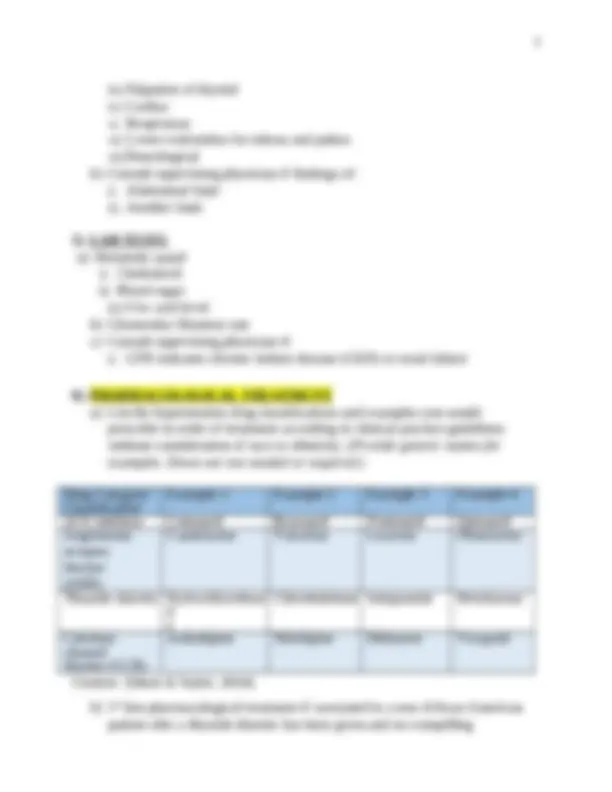
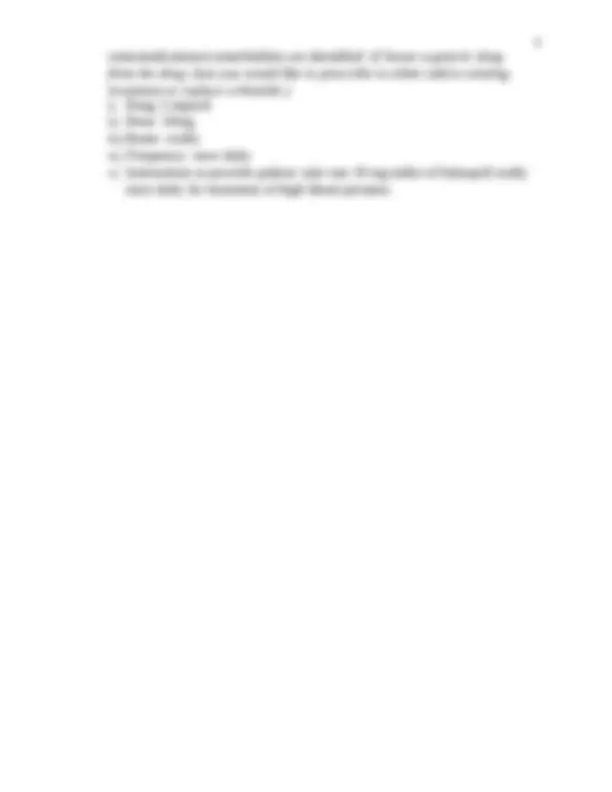
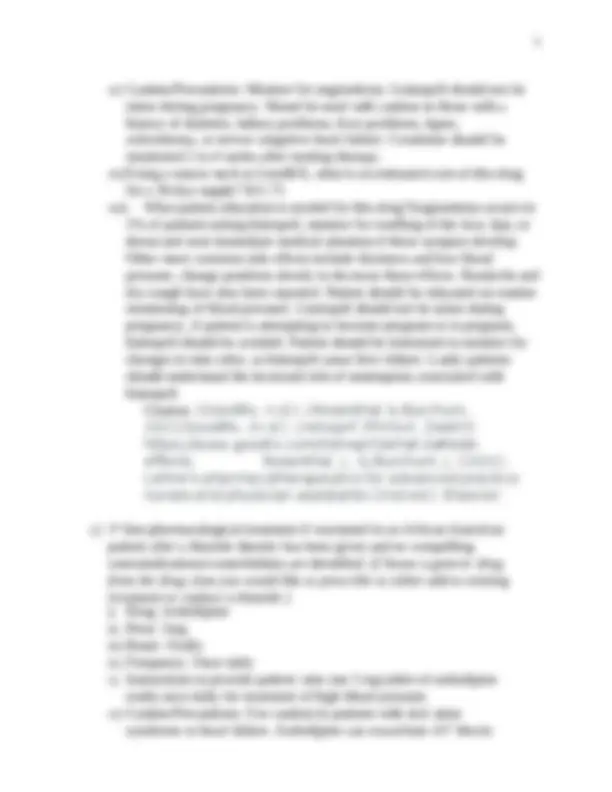
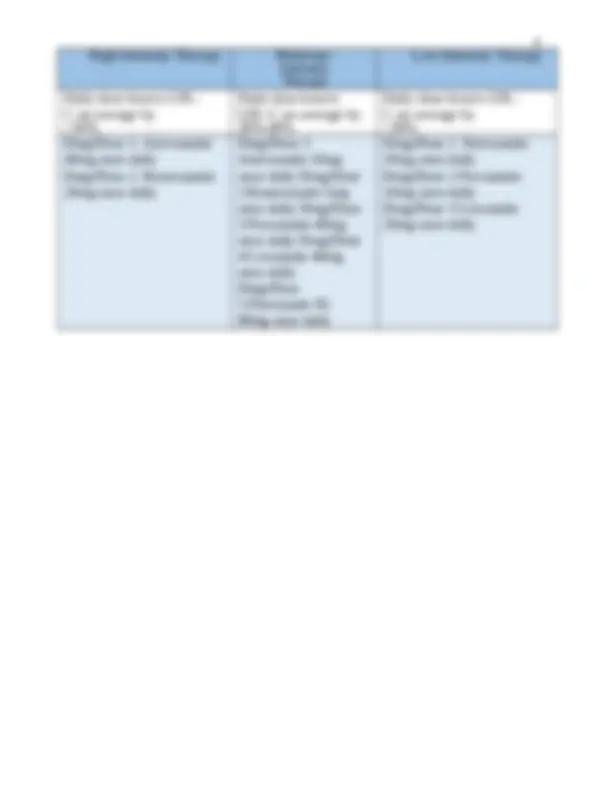
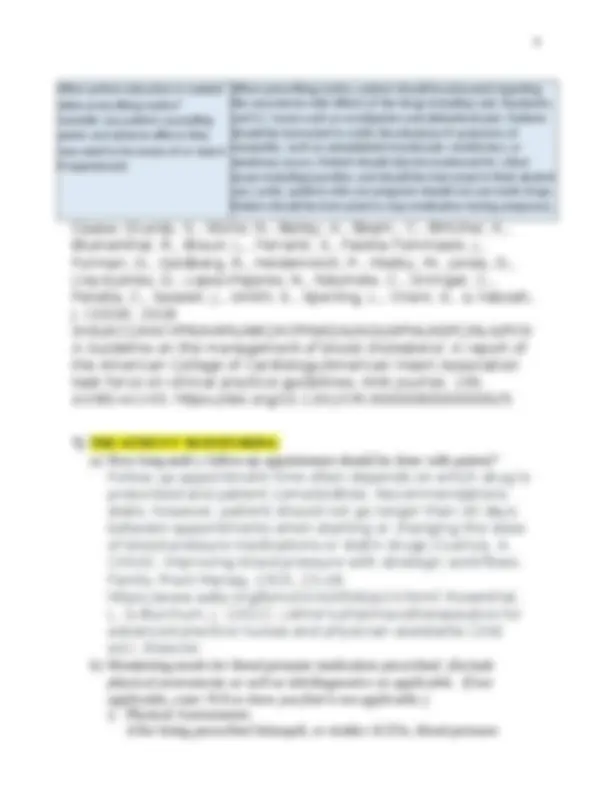
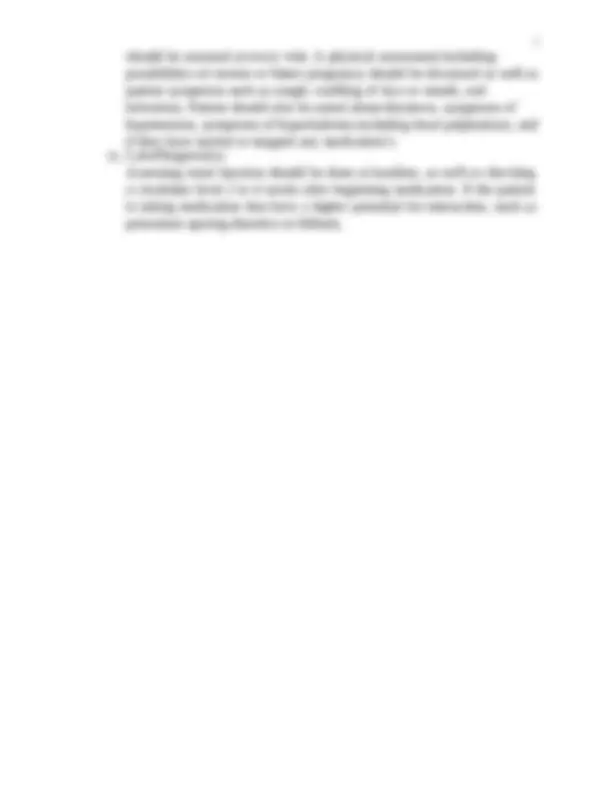


Study with the several resources on Docsity

Earn points by helping other students or get them with a premium plan


Prepare for your exams
Study with the several resources on Docsity

Earn points to download
Earn points by helping other students or get them with a premium plan
Community
Ask the community for help and clear up your study doubts
Discover the best universities in your country according to Docsity users
Free resources
Download our free guides on studying techniques, anxiety management strategies, and thesis advice from Docsity tutors
HYPERTENSION PROTOCOL: INITIAL VISIT
Typology: Exams
1 / 12

This page cannot be seen from the preview
Don't miss anything!







a) This protocol will assist in the differentiation between essential hypertension and renal artery stenosis to aid in the identification of patients in need of referral to nephrology to prevent further renal damage from an unidentified renal artery stenosis. The design of the protocol for UTI encompasses these principles. 2) SYMPTOMS a) HYPERTENSION i) Blood pressure >140/90 mmHg ii) Other possible subjective symptoms (1) Headache (2) Visual changes (3) Dyspnea (4) Chest pain (5) Sensory or motor deficit b) RENAL ARTERY STENOSIS i) Onset of hypertension age >55 years or <30 years ii) History of accelerated, malignant, or resistant hypertension iii) History of unexplained kidney dysfunction iv) History of multivessel coronary artery disease v) History of other peripheral vascular disease vi) Abdominal bruit vii) Sudden or unexplained recurrent pulmonary edema viii) Other possible factors (1) Absence of family history of hypertension (2) Other bruits (3) History of acute kidney injury after administration of ACE inhibitor or angiotensin II receptor antagonist (ARB) 3) HISTORY a) Continue with treatment of hypertension but consult supervising physician if patient has: i) History of accelerated, malignant, or resistant hypertension ii) History of unexplained kidney dysfunction
iii) History of multivessel coronary artery disease iv) History of other peripheral vascular disease v) Abdominal bruit vi) Sudden or unexplained recurrent pulmonary edema 4) PHYSICAL EXAM a) Perform the following examinations: i) Vital Signs (blood pressure, pulse) ii) Auscultation for bruits (carotid, abdominal, and femoral)
contraindications/comorbidities are identified: (Choose a generic drug from the drug class you would like to prescribe to either add to existing treatment or replace a thiazide.) i) Drug: Lisiporil ii) Dose: 10mg iii) Route: orally iv) Frequency: once daily v) Instructions to provide patient: take one 10 mg tablet of lisinopril orally once daily for treatment of high blood pressure.
vi) Caution/Precautions: Monitor for angioedema. Lisinopril should not be taken during pregnancy. Shoud be used with caution in those with a history of diabetes, kidney problems, liver problems, lupus, scleroderma, or severe congetive heart failure. Creatinine should be monitored 2 to 4 weeks after starting therapy. vii) Using a source such as GoodRX, what is an estimated cost of this drug for a 30-day supply? $11. viii) What patient education is needed for this drug?Angioedema occurs in 1% of patinets taking lisinopril, monitor for swelling of the face, lips, or throat and seek immediate medical attention if these symptos develop. Other more common side effects include dizziness and low blood pressure, change positions slowly to decrease these effects. Headache and dry cough have also been reported. Patient should be educated on routine monitoring of blood pressure. Lisinopril should not be taken during pregnancy, if patient is attempting to become pregnant or is pregnant, lisinopril should be avoided. Patient should be instructed to monitor for changes in skin color, as lisinopril cause liver failure. Lastly patients should understand the increased risk of neutropenia associated with lisinopril. Citation: (GoodRx, n.d.); (Rosenthal & Burchum, 2021)GoodRx. (n.d.). Lisinopril (Prinivil, Zestril). https://www.goodrx.com/lisinopril/what-is#side- effects. Rosenthal, L. & Burchum, J. (2021). Lehne's pharmacotherapeutics for advanced practice nurses and physician assistants (2nd ed.). Elsevier. c) 1 st line pharmacological treatment if warranted in an African American patient after a thiazide diuretic has been given and no compelling contraindications/comorbidities are identified: (Choose a generic drug from the drug class you would like to prescribe to either add to existing treatment or replace a thiazide.) i) Drug: Amlodipine ii) Dose: 5mg iii) Route: Orally iv) Frequency: Once daily v) Instructions to provide patient: take one 5 mg tablet of amlodipine orally once daily for treatment of high blood pressure. vi) Caution/Precautions: Use caution in patients with sick sinus syndrome or heart failure. Amlodipine can exacerbate AV blocks
--K., Williamson, J., & Wright, J. (2018). 2017 ACC/AHA/AAPA/ABC/ACPM/AGS/APhA/ASH/ASPC/NMA/PCNA Guideline for the prevention, detection, evaluation, and management of high blood pressure in adults: A report of the American College of Cardiology/American Heart Association task force on clinical practice guidelines. Journal of the American College of Cardiology, 71 (19) e127-e248. https://www.jacc.org/doi/full/10.1016/j.jacc.2017.11.006? _ga=2.94691612.1082415338.1618594%20379- 568651111.1618594379#sec GoodRx. (n.d.). Norvasc (amlodipine). https://www.goodrx.com/amlodipine/what- is#side- effects Rosenthal, L. & Burchum, J. (2021). Lehne's pharmacotherapeutics for advanced practice nurses and physician assistants (2nd ed.). Elsevier. d) When should ACEIs be used in African Americans according to the course textbook? Include a citation with matching reference in the reference section. i) ACEIs should be used in African-American patients who have type one diabetes with proteinuria ii) ACEIs should be used in patients with hypertensive nephrosclerosis iii) ACEIs should be used when blood pressure cannot be adequately controlled with single drug therapy, and should then be combined with either a thiazide diuretic or a calcium channel blocker. Citation: Rosenthal, L. & Burchum, J. (2021). Lehne's pharmacotherapeutics for advanced practice nurses and physician assistants (2nd ed.). Elsevier. e) Prescribe statin therapy according to the prescription table which follows: Complete the following table to indicate which drug at which dose would be used for different intensity statin therapies to treat high low-density lipoprotein (LDL) as noted in the course textbook. Each drug listed in each column should be a different drug with a specific dose or dose rans as indicated in your course textbook.
High-Intensity Therapy Moderate- Intensity Therapy Low-Intensity Therapy Daily dose lowers LDL- C on average by
50% Daily dose lowers LDL-C on average by 30%-49% Daily dose lowers LDL- C on average by <30% Drug/Dose 1: Atorvastatin 40mg once daily Drug/Dose 2: Rosuvastatin 20mg once daily Drug/Dose 1: Atorvastatin 10mg once daily Drug/Dose 2:Rosuvastatin 5mg once daily Drug/Dose 3:Pravastatin 40mg once daily Drug/Dose 4:Lovastatin 40mg once daily Drug/Dose 5:Fluvastatin XL 80mg once daily Drug/Dose 1: Simvastatin 10mg once daily Drug/Dose 2:Pravastatin 10mg once daily Drug/Dose 3:Lovastatin 20mg once daily
should be assessed at every visit. A physical assessment including^0 possibilities of current or future pregnancy should be discussed as well as patient symptoms such as cough, swelling of face or mouth, and infections. Patient should also be asked about dizziness, symptoms of hypotension, symptoms of hyperkalemia including heart palpitations, and if they have started or stopped any medication’s. ii) Labs/Diagnostics: Assessing renal function should be done at baseline, as well as checking a creatinine level 2 to 4 weeks after beginning medication. If the patient is taking medication that have a higher potential for interaction, such as potassium sparing diuretics or lithium,
1 appropriate labs should be drawn. (These include blood potassium levels or lithium levels). Citation: Rosenthal, L. & Burchum, J. (2021). Lehne's pharmacotherapeutics for advanced practice nurses and physician assistants (2nd ed.). Elsevier. c) Monitoring needs for statin medication prescribed: (Include physical assessments as well as lab/diagnostics as applicable. If not applicable, enter N/A to show you find it not applicable.) i) Physical Assessments: After being prescribed a statin medication such as atorvastatin, patients should be asked about symptoms of myopathy or rhabdomyolysis such as muscle pain or tenderness. Patients should also be assessed for risk of pregnancy and for liver injury or jaundice including assessing color pigment of skin and eyes. ii) Labs/Diagnostics: Cholesterol levels, including LDL, HDL, total cholesterol and TGs should be drawn at baseline and monthly until patient has reached desired goal. Patient should also have a liver panel and creatinine kinase level drawn at baseline, and if symptoms of jaundice, rhabdomyolysis, or myopathy appear. Citation: Rosenthal, L. & Burchum, J. (2021). Lehne's pharmacotherapeutics for advanced practice nurses and physician assistants (2nd ed.). Elsevier. 8) TREATMENT FAILURE a) How will you know if the treatment is not working or needs to progress? Include a citation with matching reference in the reference section. Ineffective therapy with an ACEI such as lisinopril will be evident based on a failed reduction in blood pressure. Goal for therapy should be to obtain a systolic blood pressure below 130 mm Hg and diastolic blood pressure below 80 mm Hg. A slight reduction could indicate the need for a higher dose, additional drug, medication or lifestyle change noncompliance, or simply the need for more time. Diabetic nephropathy patients can have proteinuria and GFR labs compared to baseline data. An improvement in patient cholesterol levels, including a decrease in LDL and an increase in HDL, will not occur if treatment is not working. Patient should be evaluated for medication and lifestyle noncompliance or the need for a larger dose.